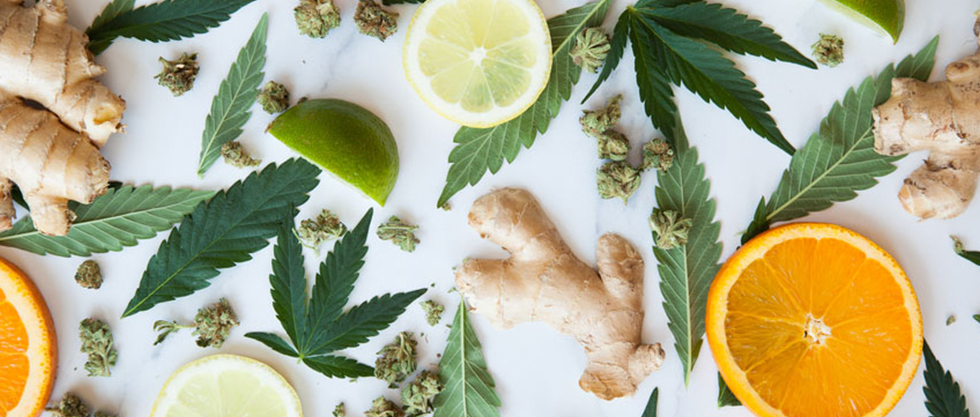As the CBD and cannabis world continues to grow every day, we often still hear the same questions. Questions like, what are terpenes? Do they matter for a cannabis or CBD product, and how do they matter?
We know there are plenty of other questions to ask for this industry, too. In this guide, we want to dedicate it to answering the question, what are terpenes? What the heck are they, and why do we keep hearing about them?! Let’s get down to the bottom of that and more in our guide on everything you need to know about terpenes.
What are Terpenes?
Also known as terpenoids, terpenes are the most diverse and largest group of naturally occurring compounds. Aromatic molecules, there are a plethora of well-known terpenes used in everyday practice. Citrus fruits, Spanish sage, cannabis, thyme, and tea are all common plant sources of terpenes. Researchers observe terpenes’ various medicinal uses and medical benefits, depending on the terpene and the concentration of the terpene in the study.
Terpenes are the compounds that determine how plants and herbs are going to smell. From rosemary to lavender, cannabis to tea, the scent each provides comes from the terpenes within them. Now, manufacturers use terpenes they’ve extracted and isolated to craft specific scents and flavors for many popular products, from foods to body products, to even perfumes and body sprays.
What Can They Do?
Firstly, there’s effective evidence that suggests terpenes have direct physiological effects on the human body, especially for the terpenes limonene and linalool. These physiological effects can vary drastically between the terpenes in question.
Various terpenes demonstrate anti-inflammatory, calming, sleep-inducing, anti-viral, anti-fungal, anti-microbial, anti-cancer, and anti-parasitic properties. Some may also help prevent inflammatory diseases. Likewise, they’re used to enhance skin penetration to improve the efficacy of certain products or substances.
What Terpenes are Found in Cannabis?
As we mentioned, one of the most common plant sources of terpenes is cannabis. Both hemp and marijuana strains naturally contain various combinations of terpenoids. It depends greatly on the strain to determine the concentration and combination of terpenes in each, so one strain may have completely opposing terpenes from another.
Linalool and limonene are the ones that appear to cause the most physiological effects. However, there are many others that produce the effects and aroma that truly make certain cannabis strains. We’ll show you what we mean.
Limonene
Limonene is the familiar fruity, citrus aroma from many plants and fruits. It’s found in a variety of everyday items, including cleaning products, cosmetics, juniper, peppermint, rosemary, and fruit rinds. The amount of benefits limonene may contain is vast. Many studies suggest that it has antifungal and antibacterial properties.
Most importantly, people use it for anxiety, depression, and even stress relief. Likewise, it may provide relief for inflammation, cancer, and certain types of pain. Frankly, its uses seem never-ending. One of the most abundant terpenes found in cannabis strains, it makes sense why weed may help many users across the nation.
Linalool
Firstly, cannabis strains abundant in linalool are not too common. In fact, they’re a fairly rare occurrence. Linalool as a terpene, however, is mildly psychoactive, found in lavender. When extracted and isolated, or combined with other compounds, it’s used to help treat conditions like inflammation, pain, insomnia, depression, and anxiety.
Myrcene
This is one of the big guys. Myrcene constitutes up to 50% of the total terpene content in certain cannabis strains. By itself, it exhibits earthy, musky, and herbal aromas.
On the health benefits side, it has promising anti-tumor effects. In addition, it may provide calming, sleep-inducing, antibiotic, pain-relieving, and anti-inflammatory properties. Similarly, Myrcene is an antioxidant. In addition, people also use it as a treatment for certain types of chronic pain, insomnia, and inflammation. Above all, it’s an incredibly versatile terpene that makes it popular in many CBD and hemp-derived products.
Wrapping Up: What are Terpenes?
Now we know what terpenes are and some of the effects they can provide. Even though everyone is different, these powerful aromatic molecules may help you in some way. In conclusion, we hope this guide explained what are terpenes and their potential benefits. Make sure to check out our broad-spectrum and full-spectrum products for the terpenes you seek.
Make sure to check out the next blog: Is There Actually a Difference Between Indica and Sativa Strains?
